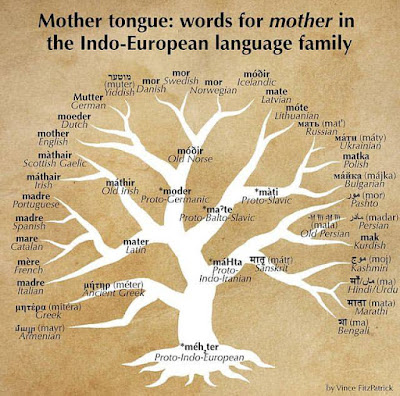Barnstokk: Apple or Oak?
I have trees on my mind at the moment, so I want to unpack a bit of the symbolism of the tree Barnstokk. If you have ever read the Saga of the Völsungs you will recognize that Barnstokk is the name of the tree that grows in King Völsung’s hall. There is a lot of symbolism that the modern reader may overlook to do with trees that could be relevant to the story. First of all, it is an old custom for a family to plant a tree outside their home that is their tuntre, or guardian tree. The tree, if nurtured well, holds the family’s luck. If something happens to the tree then the luck of the family will also fail, usually resulting in the family perishing. It is unusual for the tree to be protected inside the hall, as is the case with Barnstokk.
There are a few other strange things to do with this particular tree. Odin, disguised as an old man, appears and thrusts a sword into Barnstokk, declaring that whoever can pull the sword out of the tree will have it. King Siggeir tries to pull it out and fails, and is insulted. It is a wedding tradition that a sword be stuck into a beam of the hall and that it should be the groom to pull it out. Siggeir is doubly insulted when Sigmund, not much more than a boy, manages to pull it free. A lot can be read into this scene. Odin gives the gift of Gram to whoever can prove themselves worthy of the sword, but the gift has a price. Odin thrusts the sword into Barnstokk, the family’s luck tree. When Sigmund pulls it free then the tree is damaged, and the luck of the family slowly begins to seep out. We can see this theme in the story as well. Sigmund seems initially successful with the sword, Gram, on the battlefield, but the slight to Siggeir in retrieving it from Barnstokk will be his downfall. His choice to pull Gram free of Barnstokk puts into motion the destruction of his own family. Sigurd manages to reclaim the family’s luck with the reforged Gram, but this luck also fades and the family withers from there.
The other strange occurrence is that Barnstokk is referred to as both apple and oak in the text. There is an explanation for this, as in the Old Norse language both apple and oak can be synonyms for tree. Usually when the text is translated the translator chooses to use either apple or oak to describe Barnstokk, and not both. However, good arguments can be made for both types of trees within the story itself. Let’s take a look at the symbolism of trees in Europe, as well as in the Lore to see why both types of trees would be a good fit for the luck tree of the Volsung family.
Apple seems like the logical choice for Völsung’s luck tree because an apple was given to Völsung’s parents by Frigg so that he could be conceived. The name “Barnstokk” literally translates as “child stem,” which seems to allude to Völsung’s conception. We can also look to the Lore and recall Idunn’s apples which produce longevity. This seems like a good choice for a tree to house the family’s luck. The apple tree is associated with health, prosperity, endurance, abundance, and love. If you look at it from this perspective the family tree is a foreshadowing of events to come. It gets pierced on Signy’s wedding day and as such the marriage is doomed to be unhappy.
Alternatively, the tree could be an Oak. Traditionally a tuntre is often an oak because oaks are known for their longevity, which makes them ideal if you plan to house the family’s luck in one. Some oaks can live for 600 years. The wood is strong, which may explain why it would be difficult to pull a sword out of Barnstokk’s trunk.The other reason an oak might make sense is there could be a parallel being drawn with another tree from the Lore, which would be Yggdrasil of course. (Is Yggdrasil an ash or an oak? I don’t have time to try to unpack this one too.) A parallel between these two trees in a story where Odin makes an appearance seems likely. Oak also makes sense if you are drawing parallels with other stories. The story of the Sword and the Stone is very similar in its layout. A sword driven into something, and only the worthy can retrieve it. We can also note that Arthur’s round table was hewn from a single cross section of oak. Trees and groves were sacred across Europe in pre-Christian times, and oak trees were often the trees in these groves. The oak was revered for its endurance, strength, and association with luck. Doors were often made of oak because they were believed to possess protective powers. All of these qualities make sense for a tuntre.
So this is where I leave you. Is Barnstokk an apple or an oak? Both make good sense for their own reasons, and both lend something to the telling of the story. Perhaps the ambiguity is more telling. Barnstokk is Tree, and as Tree it possesses both qualities of apple and oak.
Further Reading:
“Gylfaginning”
https://www.sacred-texts.com/neu/pre/pre04.htm
“In Search of askr Yggdrasill: A Phenomenological Approach to the Role of Trees in Old
Nordic Religions”
https://skemman.is/bitstream/1946/30535/1/MA%20thesis.pdf
“Sacred Trees of Norway and Sweden: A Friluftsliv Quest”
https://norwegianjournaloffriluftsliv.com/doc/192010.pdf
The Saga of the Völsungs edited and translated by R.G. Finch
“The Secret Language of Trees”
https://talesfromthefairies.wordpress.com/tag/tree-symbolism/
“Trees as a Central Theme in Norse Mythology and Culture: An Archaeological Perspective”
https://scancan.net/gilmore_1_23.htm
“Tree Spirit Wisdom: Celtic & Norse”
https://treespiritwisdom.com/reincarnation/celtic-norse-europe/
Photo Source:
“Barnstokk in the Hall of the Volsungs” by Alan Lee



